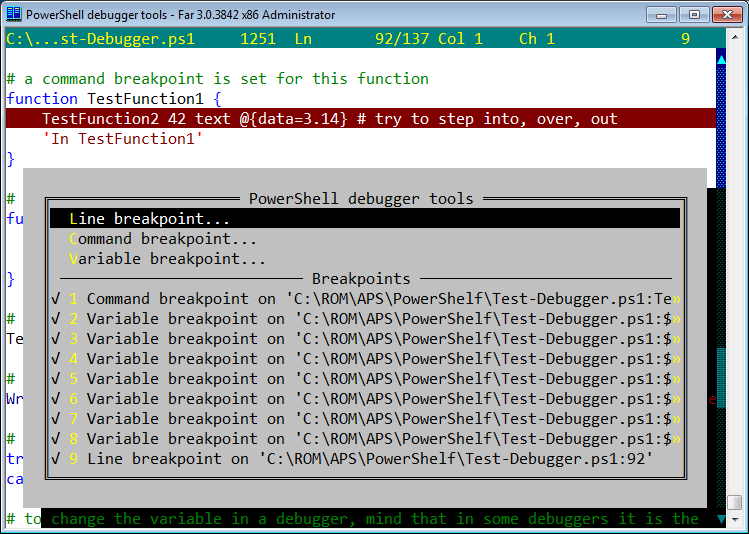-
-
Notifications
You must be signed in to change notification settings - Fork 19
PowerShellFar features
The main tools are in the module menu. It is opened in almost any UI context in
Far Manager by [F11] \ PowerShellFar. Some of the menu commands are briefly
described below with pictures.

This command input box can be opened from almost any UI context.
Use [Tab] for code completion.

Ability to invoke commands from any context is useful for exploring the current
UI objects, e.g. $Far.Editor invoked from the editor shows the editor object
properties. Note that output is shown in the viewer, not written to the
console.

There are three types of editor consoles for main, local, and remote sessions. The editor console emulates the console window. The last line is the command line. Output is appended to the same editor.
Points of interest:
- PowerShell syntax highlighting.
- Editor console can be opened from any UI context.
- Local and remote console commands do not block the UI.

The Power panel menu prompts to choose and open a panel for a PowerShell
provider drive in order to explore items and perform standard operations like
copy ([F5]), move ([F6]), rename ([ShiftF6]), remove ([F8], [Del]).
Copy and move require two panels opened. View ([F3]) and edit ([F4]) also
work if a provider supports item content.

PowerShell breakpoints are set interactively by [F11] \ PowerShellFar \ Debugger.
Note that line breakpoints are highlighted in the script editor.

When a breakpoint is hit the debugger dialog is opened. It shows the source code and provides options for stepping through the code and other commands including opening a command or editor console.

This is the list of PowerShell errors, the content of $Error. If an error has
the source information (there is a tick on the left) then [F4] opens the
source at the error line. [Del] removes all errors.
